[ad_1]
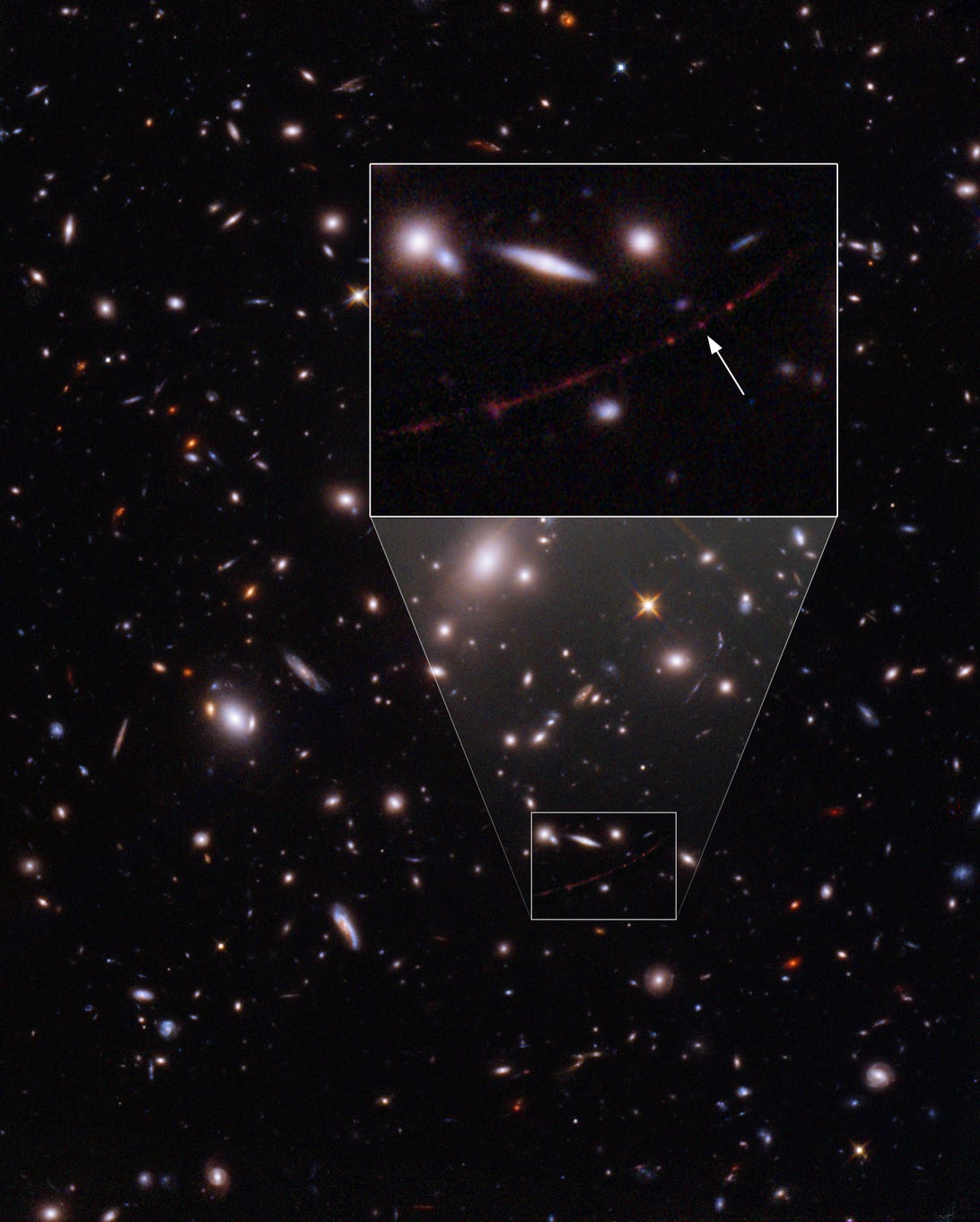
Earendel (indicated with arrow) is situated alongside a ripple in space-time that provides it excessive magnification, permitting it to emerge into view from its host galaxy, which seems as a pink smear around the sky.
NASA, ESA, Brian Welch, Dan Coe
On Wednesday, NASA introduced a discovery our minds can slightly fathom.
The Hubble House Telescope noticed a celebrity that is no less than 50 instances the mass of our solar, glows a number of million instances brighter and is nestled so completely deep in area that it took a colossal 12.9 billion years for its gentle to succeed in Earth. It was once born when the cosmos was once at simply 7 p.c its present age and, after accounting for the universe’s steady growth, at this time floats 28 billion light-years away.
This glimmering leviathan is the farthest, oldest unmarried megastar ever noticed by way of humankind.
And after some deliberation, scientists gave the cosmic artifact a reasonably touching identify: Earendel, which means that “morning megastar” in Previous English.
“Learning Earendel can be a window into an technology of the universe that we’re unfamiliar with, however that resulted in the whole thing we do know,” Johns Hopkins College astronomer Brian Welch stated in a remark. Welch is lead writer of a paper revealed Wednesday within the magazine Nature that describes Earendel’s discovery.
However prior to we move to any extent further into how this particular megastar arrived in our line of imaginative and prescient, and what it could possibly let us know about our previous, let’s put Earendel into viewpoint for our mere mortal brains.
Our solar is a whopping 109 instances the dimensions of Earth, and Earendel is between 50 and 500 instances larger than that. Our solar is just about 93 million miles (149,669,000 kilometers) from us, but regardless of this distance, it is the sole lightbulb managing to light up our entire global. Earendel is thousands and thousands of instances brighter than our solar.
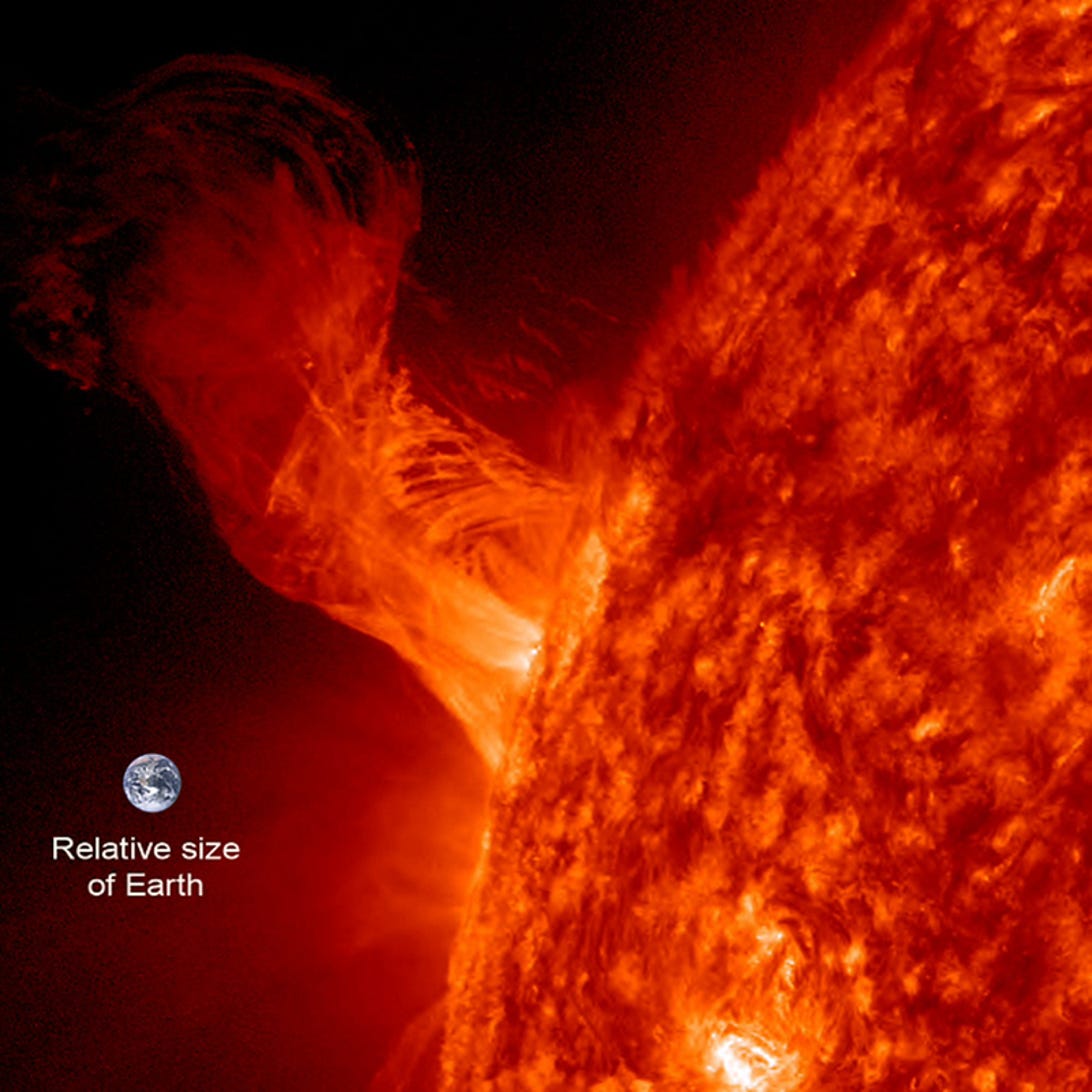
A measurement comparability of the Earth and solar. Wow.
NASA
And after all, the former distance-record-holding megastar, dubbed Icarus and positioned by way of Hubble in 2018, got here into life when the universe was once at about 30 p.c its present age; it took 9 billion years for Icarus’ gentle to succeed in us. Earendel is way (a lot) extra historical and far off than even that.
With Earendel, we are taking a look at gentle that originated simply after the Giant Bang — photons that journeyed for lots of millenia to succeed in human eyes.
“As we peer into the cosmos, we additionally glance again in time, so those excessive high-resolution observations permit us to grasp the construction blocks of one of the most first actual galaxies,” Victoria Strait, an astronomer on the Cosmic Break of day Heart in Copenhagen and co-author of the find out about, stated in a remark.
Welch introduced a metaphor: “It is like we have been studying a truly attention-grabbing guide, however we began with the second one bankruptcy, and now we will be able to have an opportunity to peer the way it all were given began.”
Photographing a celebrity 28 billion light-years away
It seems like a fantasy.
For Hubble to put eyes on Earendel, a crowd of far off galaxies had to completely align and deform the material of area and time with ultra-high precision.
“In most cases, at those distances, complete galaxies appear to be small smudges, with the sunshine from thousands and thousands of stars mixing in combination,” Welch defined. That is why the staff was once stunned to peer a unmarried megastar, Earendel, protruding. However there Earendel was once, due to an interesting phenomenon known as gravitational lensing. In a nutshell, here is what this is.
In step with Albert Einstein’s idea of normal relativity, area and time are attached as a form of material. Tremendous huge gadgets on this material, like planets or black holes, make it morph, or warp, inward. Consider striking a fifty pound weight onto a trampoline; the trampoline will warp inward and variety a curve. It is the similar concept.
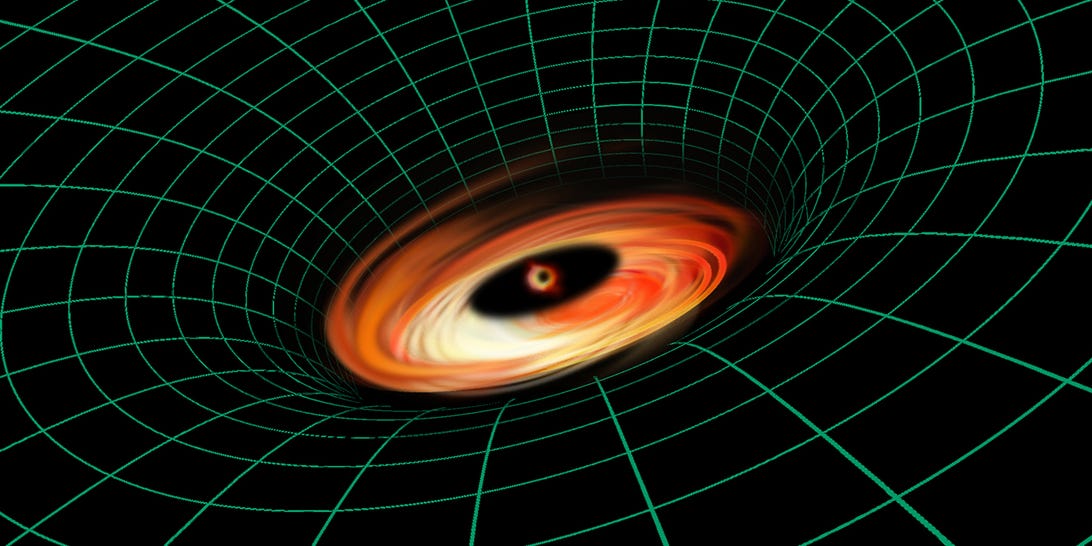
A demonstration depicting how the material of area and time warps. Regardless that, take into accout, it is a 2D symbol. In truth, this occurs in upper dimensions, which our truly exhausting for our brains to appreciate.
NASA/ESA/A. Feild and L. Hustak (STScI)
And the extra huge the article, the larger the curve. That is why black holes are referred to as the cream of the warping crop. However regardless, the universe is full of a number of those curves as it has loads of huge gadgets, and smaller gadgets have a tendency to fall alongside the ones curves.
For example, people are possibly planted on Earth as a result of we are falling alongside Earth’s curve — in the case of the trampoline analogy, we are like one pound weights falling alongside the fifty pound weight’s curve. Einstein’s idea says that this falling-along-curves thought is what we understand as gravity, however returning to the miracle of Earendel, those curves additionally from time to time mess with our view of outer area.
Mainly, when essentially the most huge cosmic our bodies come in combination, aka galaxy clusters, which grasp billions of stars and several other black holes, huge warping occurs, too. This loopy warp is robust sufficient to impact gentle within reach, thereby distorting and magnifying the luminescence of cosmic gadgets within the neighborhood.
With simply the human eye and a telescope, even one like Hubble, those gadgets are simply too some distance away or faint to peer, however as soon as gentle illuminating them is administered in the course of the cluster curve, they arrive into center of attention. This is known as gravitational lensing, and it is how Welch and fellow researchers noticed Earendel.
“The galaxy webhosting this megastar has been magnified and distorted by way of gravitational lensing into a protracted crescent that we named the Dawn Arc,” Welch stated.
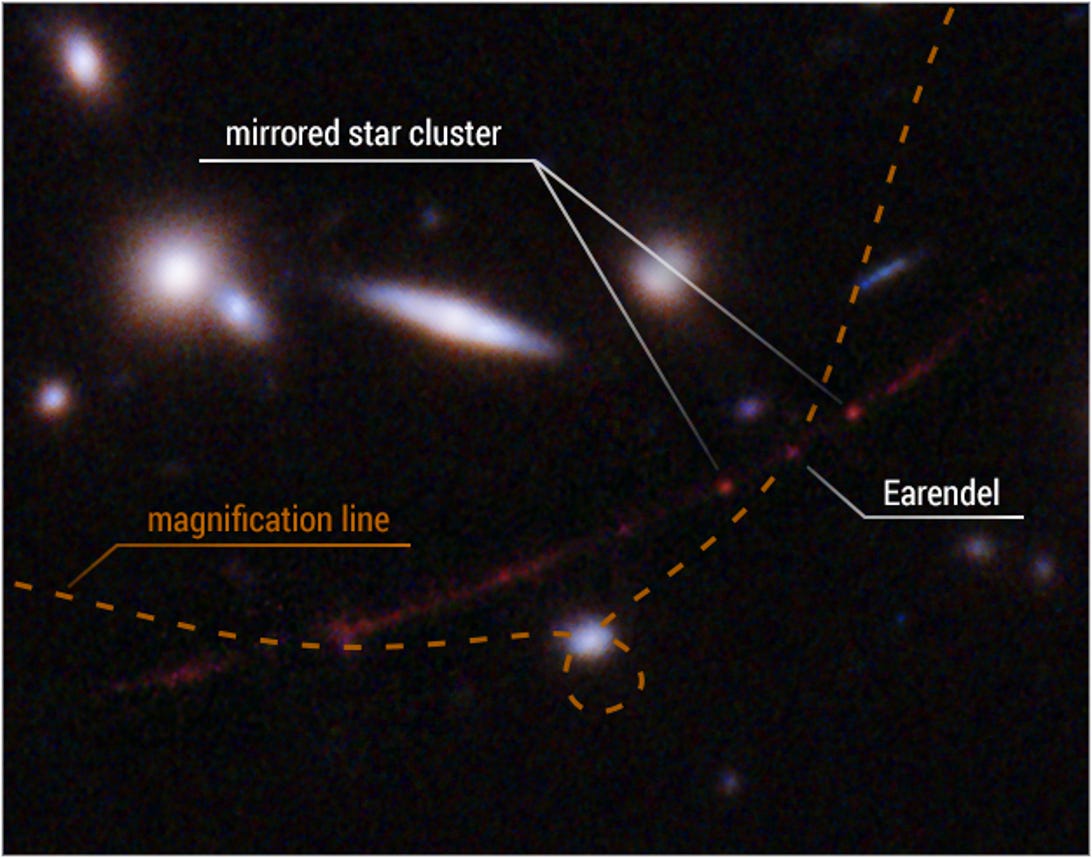
An in depth-up view of Earendel.
NASA, ESA, Brian Welch, Dan Coe
However possibly maximum astonishing on this discovery is that each and every galaxy cluster on how to Earendel orientated itself in any such method as to warp the only megastar’s gentle and make it stick out within the Dawn Arc.
NASA calls it a stroke of success.
NASA’s James Webb Telescope to review Earendel
Having a look to the long run, Earendel is more or less the very best topic for NASA’s James Webb House Telescope, which introduced past due closing yr and is the company’s impressive undertaking to symbol the cosmos as they had been proper after the Giant Bang. It is constructed to inspect the universe throughout huge timelines.
The device is armed with a extremely specialised toolkit that may locate photons from light-years upon light-years away, scan for imaginable alien existence lurking in deep area, elucidate the origins of black holes and, relevantly to Earendel, read about extraordinarily previous stars in unparalleled element.
“With James Webb, we can verify that Earendel is certainly only one megastar, and on the similar time quantify which form of megastar it’s,” Sune Toft, chief of the Cosmic Break of day Heart and professor on the Niels Bohr Institute, stated in a remark. Toft participated within the Earendel find out about.
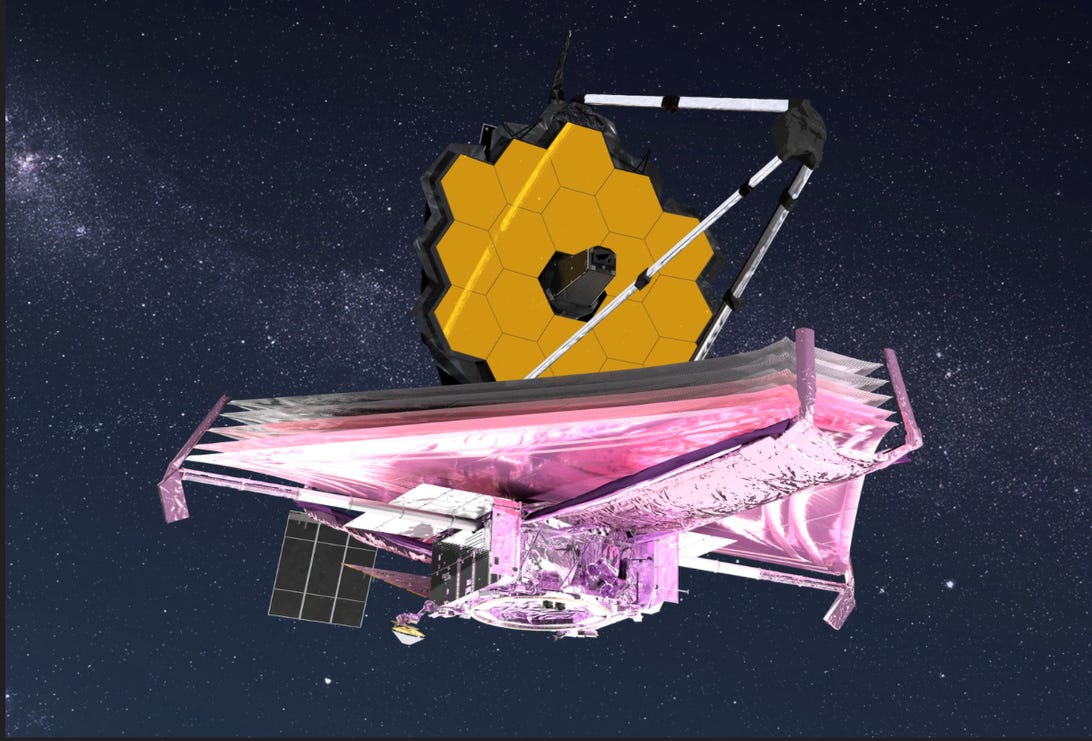
The James Webb House House Telescope in an artist’s rendering.
NASA GSFC/CIL/Adriana Manrique Gutierrez
Webb’s apparatus may even make clear Earendel’s chemical composition, which, according to the researchers, may well be the most important deal of all.
On the time Earendel was once born, the analysis staff says, the universe wasn’t but full of the common set of heavy components that give upward push to the celebs nearer to us — more youthful stars. “Earendel may well be the primary identified instance of the universe’s earliest technology of stars,” Toft stated, and “this is able to recommend Earendel is a unprecedented, huge metal-poor megastar,” Dan Coe, an astronomer on the House Telescope Science Institute in Baltimore and co-author of the find out about, stated in a remark.
However within the grand scheme of items, Webb would possibly neatly be a step forward.
For those who recall, when the telescope blasted off, it left the arena in a flurry of surprise as a result of it is poised to reply to questions we would possibly’ve by no means even concept to invite and to seek out gadgets lets by no means have dreamed of. “With Webb, we would possibly see stars even farther than Earendel, which might be extremely thrilling,” Welch stated. “We will move way back to we will be able to.
“I would like to peer Webb damage Earendel’s distance checklist.”
Get the CNET Now newsletter
Spice up your small talk with the latest tech news, products and reviews. Delivered on weekdays.
[ad_2]
